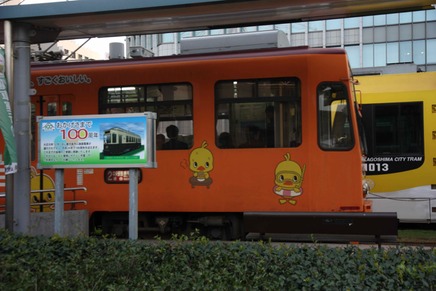
The Royal Navy bombarded Kagoshima in 1863 after the daimyō of Satsuma refused to pay an indemnity to compensate for the murder of Charles Lennox Richardson on the Tōkaidō highway the previous year and the city was the birthplace and last stand of Saigō Takamori at the end of the Satsuma Rebellion in 1877. More significantly in the long term, nineteen young men from Satsuma broke the Tokugawa Shogun’s ban on foreign travel, travelling to England and the United States to study Western science and technology, an adventure that did much to kickstart Japan's industrial revolution. There’s a statue outside the train station paying tribute to them.
Kagoshima was also the birthplace of Tōgō Heihachirō whose role as Chief Admiral of the Grand Fleet of the Imperial Japanese Navy in the Russo-Japanese War produced startling victories in 1904 and 1905, destroying Russian naval power in the East, and contributing to the failed 1905 revolution in Russia.
The city’s status as a significant naval base and position as a railway terminus saw a mass bombing raid on the night of 17 June 1945 that deposited over eight hundred tons of incendiary and cluster bombs destroying over forty per cent of the built-up area. Today, Kagoshima produces a wealth of agricultural and marine produce, is home to sophisticated electronic technologies and is the only prefecture with a rocket launching facility, which assembles the cream of modern science. In March 2004, the city became the southern end of the Shinkansen bullet train network, with services terminating at Kagoshima-Chuō.
Recent upgrades mean Kagoshima is now eighty minutes from Fukuoka (Hakata if you want to split hairs). It’s around two and a quarter hours to Hiroshima, just under three and a half to Okayama, just over four to Osaka in the heartland of the Kansai Region and between seven and eight hours to Tokyo depending on the particular service you choose to use. That involves a combination of the Tokaido, San'yo and Kyushu Shinkansen lines so there are a variety of permutations and combinations. There doesn’t seem to be a single service that runs straight through.
The day's travel proceedings involved, in Madam's words, a big train day, though given our location at the very end of the Shinkansen network you might question how that was possible. The answer to your question, of course, involved local lines, and while I knew this was the case there was nothing in the lead up to departure to suggest there was anything much out of the ordinary.
Now, had I been a bit more thorough in my pre-trip research I might have known I was in for something special once we'd partially retraced our steps on the Shinkansen network and alighted at Shin-Yatsushiro, but even Madam, who'd planned the day's route and only had us doing this bit because it would deliver us to Hitoyoshi was gobsmacked by what came next.
It wasn't, by all admissions, the most promising of starts. Once we'd alighted at Shin-Yatsushiro and made our way from the Shinkansen section to the much more prosaic surroundings of the local line the first train that appeared was a local stopping at all stations conveyance that was as run down as you might suspect under the circumstances.
We weren't quite in the back blocks, being on the main Shinkansen line, but if you were bound for the boondocks this was the train that would get you there.
And it certainly looked the part.